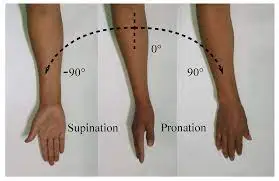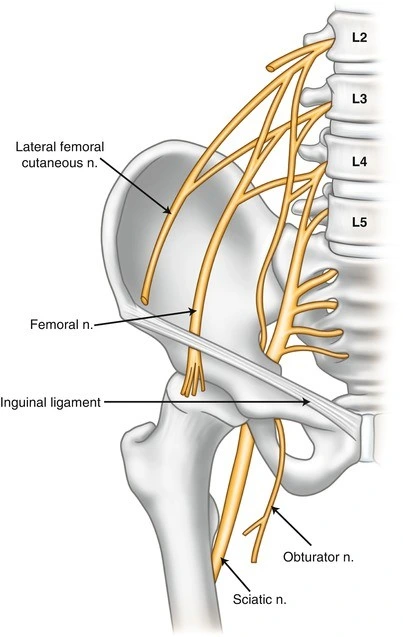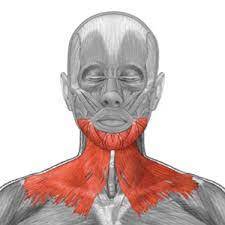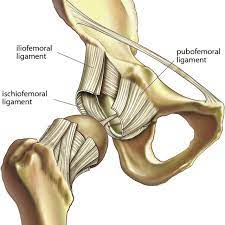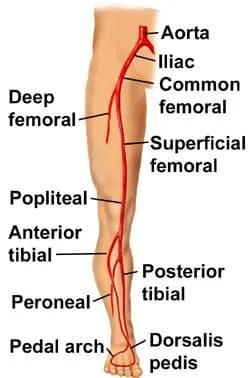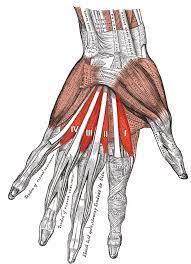Wrist Pronation and Supination
Table of Contents
What is a Wrist Pronation and Supination?
Wrist pronation and supination are important movements that occur at the forearm and play a crucial role in various everyday activities and functional tasks. These movements involve the rotation of the forearm bones—the radius and ulna—around each other, resulting in different orientations of the hand and wrist.
Pronation refers to the motion of turning the forearm and hand inwards, causing the palm to face downward or towards the posterior side of the body. During pronation, the radius rotates over the ulna, and the hand and wrist follow suit. This movement is commonly observed when placing the palm on a flat surface or when turning a doorknob in a downward motion.
On the other hand, supination involves the opposite motion—rotating the forearm and hand outwards, leading to the palm facing upward or towards the anterior side of the body. During supination, the radius and ulna untwist, and the hand and wrist follow, resulting in the palm facing upward. This movement is frequently used when pouring liquid from a container or rotating the steering wheel of a car.
Both pronation and supination rely on the coordination of various muscles, tendons, and ligaments located in the forearm. The primary muscles responsible for these movements include the pronator teres, pronator quadratus, supinator, and various muscles of the wrist. These muscles work together to generate the necessary force and control to achieve smooth and precise pronation and supination.
The ability to perform wrist pronation and supination is essential in numerous activities, including daily tasks such as cooking, typing, and carrying objects. In sports, these movements are crucial for activities like golf swings, racquet sports, and throwing motions.
Understanding the biomechanics and proper execution of wrist pronation and supination is important for athletes, healthcare professionals, and individuals seeking to prevent or rehabilitate wrist and forearm injuries. Proper training, conditioning, and flexibility exercises can help improve these movements and enhance overall performance and functionality in various contexts.
Wrist Pronation
What is Wrist Pronation?
- Wrist pronation refers to a movement of the wrist joint that turns the palm down or toward the back of the forearm. Anatomically, pronation is a movement in which the forearm and hand are rotated so that the palm faces backward or downwards. This involves rotating the radius of the forearm over the ulna.
- To visualize wrist pronation, hold your hand out in front of you, palm up. Then turn your hand and forearm inwards so that the palm is facing down or towards the back of the forearm. This movement is called pronation. This is the opposite of supination, where the palm turns upwards or forwards.
- Wrist pronation is an important movement that enables various functional activities and is often used in everyday tasks such as pouring water, using a screwdriver, or typing on a keyboard. It is also important in sports and activities that require grips, such as lifting weights or playing tennis, as proper pronation helps optimize power and control. It is important to note that wrist pronation primarily involves the rotation of the forearm bones, but the wrist joint itself also plays a role in facilitating movement.
Wrist Pronation Muscles
A wrist push-up involves the coordinated action of several forearm muscles. These muscles work together to rotate the forearm and facilitate pronation at the wrist joint. The main muscles involved in wrist flexion are:
- Pronator Teres: This muscle originates from the medial epicondyle of the humerus (the bony projection on the inside of the elbow) and is located on the radius of the forearm. It plays an important role in pronation and is one of the most important muscles responsible for this movement.
- Pronator Quadratus: This muscle lies deep in the forearm and extends from the distal end of the ulna to the distal end of the radius. It rotates the radius and helps with wrist pronation.
- Flexor Carpi Radialis: Although its main function is to flex the wrist, the flexor carpi radialis also contributes to wrist pronation to some extent. It is situated near the base of the second and third metacarpals of the hand and derives from the medial epicondyle of the humerus.
- Palmaris Longus: This muscle, which some people lack, also contributes to wrist pronation. It extends along the inside of the forearm, originates from the medial epicondyle of the humerus, and continues to the palmar aponeurosis.
These muscles work together to produce wrist pronation. When contracted, they apply force to the bones of the forearm, causing a rotation that turns the palm down or towards the back of the forearm.
Range of Motion of Wrist Pronation
Wrist pronation range of motion refers to the range of motion or rotation that the wrist joint can achieve during pronation. It is measured in degrees and can vary between individuals based on factors such as flexibility, strength, and anatomical variations. On average, the wrist pronation range of motion is approximately 80-90 degrees. This means that starting with the palm facing up (supination), the wrist can be turned inwards (pronation) until the palm is facing down or towards the back of the forearm.
Movement can be affected by many factors such as human anatomy, joint condition, and muscle flexibility. It is worth mentioning that range of motion can also be affected by certain conditions or injuries that can limit the movement of the wrist joint. For example, conditions such as arthritis, tendinitis, or previous fractures of the forearm or wrists can limit the normal range of motion and cause discomfort or pain when pronating.
If you are concerned about wrist pronation or movement limitations, it is recommended that you consult a doctor such as a physiotherapist or orthopedist. They can assess your specific situation and prescribe exercises, stretches, or interventions that can help improve wrist mobility.
To check your wrist pronation range of motion, perform a simple self-assessment using the following steps:
- Sit or stand in a comfortable position with your arm resting on a flat surface, such as a table, palm up.
- Keep your elbow bent at 90 degrees and make sure your forearm is well-supported and relaxed.
- Slowly begin to rotate the forearm inward, turning the palm down or toward the back of the forearm. Move within a comfortable range and stop when you feel pain or discomfort.
- As you turn, observe the movement and note the point where you can no longer bend the wrist. This is the maximum movement duration for your endpoint or wrist prone.
- Repeat the process a few times to ensure the consistency and accuracy of your estimate.
Going through these steps will provide insight into wrist pronation. However, it is important to note that self-assessment may not provide an accurate measure, and in case of concerns or special circumstances, it is recommended to consult a doctor who can provide a more in-depth assessment. In addition, a doctor such as a physical therapist or orthopedist can use various techniques, such as goniometry (using a special tool to measure joint angles) or manual assessment, to accurately measure and evaluate your movement.
Wrist Pronation Test
One common test used to assess wrist pronation is the “active pronation test.” This test helps assess the range of motion and strength of the muscles involved in wrist flexion. You can complete the active pronation test as follows.
- Sit or stand in a comfortable position with your forearm resting on a flat surface, such as a table, with your palm facing up.
- Keep your elbow bent at 90 degrees and make sure your forearm is well-supported and relaxed.
- Begin by actively turning the forearm inward, trying to turn the palm down or to the back of the forearm as much as possible.
- Gradually increase strength and effort while maintaining a smooth, controlled movement.
- Be aware of any pain, discomfort, or limitations you feel while moving.
- Note the angle or degree of pronation you reach before reaching the endpoint or pain. With the active pronation test, you can assess your range of motion and identify any limitations or discomfort during wrist pronation.
Exercise For Wrist Pronation
Here is an exercise you can do to strengthen the muscles involved in a wrist push-up:
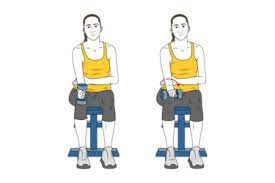
- Pronation/supination with dumbbells:
- Sit in a chair or stand with your forearm on a table or thigh, palm up. Hold a light bar (or other object of similar weight) in your hand. Slowly rotate the forearm with palm-down pronation. Pause for a moment in the prone position. Slowly return the forearm to the starting position and return to supination with the palm facing up.
- Wrist-pronation stretch:
- Extend your arms in front of you, palm up. Hold your fingers with your other hand and gently pull them down, encouraging wrist pronation. Hold the stretch for about 20-30 seconds while maintaining a slight stretch. Release the stretch and repeat with the other arm. Do 2-3 repetitions for each arm. This stretch helps increase the flexibility and range of motion of the wrist pronators. Be sure to choose an appropriate weight that allows you to perform the exercise with control and without pain.
- Doing this exercise strengthens the pronator muscles and improves wrist pronation and range of motion. It is important to maintain proper form during exercise and avoid discomfort or pain.
Wrist pronation Special test
There is no specific test to assess wrist pronation alone. However, there are a number of clinical tests that can be used to assess the overall range of motion and function of the wrist, which indirectly include the assessment of pronation. These tests can help identify limitations or abnormalities in wrist movement. Some of the most commonly used tests to evaluate the wrist include:
- Wrist range of motion test: This involves assessing the active and passive range of motion of the wrist joint, including pronation. The examiner observes and measures the extent of pronation achieved during the movement.
- Wrist Strength Test: This test assesses the strength of the wrist muscles, including the pronators. The examiner may ask the patient to prevent forceful pronation of the examiner’s arm or a resistance device.
- Assessment of grip strength: Grip strength is closely related to wrist function and may indirectly indicate pronator muscle strength. Various devices can be used to measure grip strength, such as a dynamometer.
- Functional tests: Functional tests assess the wrist’s ability to perform certain tasks involving pronation, such as grasping objects, turning a doorknob, or turning a screwdriver.
These tests assess wrist coordination and strength during functional movements. It is important to note that these tests are usually performed by health professionals, such as physical therapists or orthopedists, who are experienced in evaluating the wrist joint and related movements. They can provide a thorough assessment and interpret test results in the context of your condition or concern.
Wrist Supination
What is Wrist Supination?
- Wrist supination refers to the movement of the wrist joint that turns the palm up or toward the front of the forearm. Anatomically, supination refers to a movement in which the forearm and hand are rotated so that the palm faces forward or upward. This involves twisting the radius of the forearm over the ulna. To illustrate wrist supination, hold your hand out in front of you, palm down. Then turn your hand and forearm outward so that the palm is facing up or towards the front of the forearm. This movement is called supination. This is the opposite movement of pronation, where the palm faces down or towards the back of the forearm.
- Wrist supination is a significant movement that enables a variety of functional activities and is often used in everyday tasks such as pouring from a jug, turning a screwdriver clockwise, or carrying a tray palm up. It is also important in sports and activities that require grips, such as tennis, golf, or weightlifting, as proper supination helps optimize power and control.
Wrist supinator Muscles
Wrist supination involves the coordinated action of several forearm muscles. These muscles work together to rotate the forearm and facilitate supination at the wrist joint. The primary muscles involved in wrist supination are:
- Biceps Brachii: Although known primarily as the muscle involved in elbow flexion, it also plays a role in supination. It originates from the scapula and lies on the radial tuberosity. A biceps contraction helps initiate and facilitate supination.
- Supinator: The supinator muscle is located deep in the forearm and is primarily responsible for supinating. It originates from the lateral epicondyle of the humerus and inserts on the proximal radius. The supinator muscle is specifically dedicated to supinating the forearm.
- Brachioradialis: Although its main function is elbow flexion, the brachioradialis muscle also helps in supinating the wrist. It originates from the distal part of the humerus and enters the radius. This helps in the initial phase of supination and provides stability during movement.
- Extensor Carpi Radialis Longus and Brevis: These muscles are located on the lateral side of the forearm and are mainly involved in wrist extension, but also contribute to wrist supination.
They originate from the lateral epicondyle of the humerus and enter the base of the second and third metacarpals. These muscles work together to produce a supination movement of the wrist. When contracted, they apply force to the bones of the forearm, causing a rotation that turns the palm upwards or towards the front of the forearm.
Range of motion of Wrist Supination
Wrist supination range of motion refers to the range of motion or rotation that the wrist joint can achieve during supination. It is measured in degrees and can vary between individuals based on factors such as flexibility, strength, and anatomical variations. The range of motion of wrist supination is approximately 80-90 degrees on average. This means that starting with the palm facing down (pronation), the wrist can be turned outward (supination) until the palm is facing up or towards the front of the forearm.
However, it is important to note that range of motion can be affected by a number of factors such as an individual’s anatomy, joint health, and muscle flexibility. It is worth mentioning that range of motion can also be affected by certain conditions or injuries that can limit the movement of the wrist joint. For example, arthritis, tendinitis, or previous fractures of the forearm or wrist can limit normal movement and cause discomfort or pain.
while supinating. If you are concerned about wrist supination or limitations in range of motion, it is recommended that you consult a doctor such as a physiotherapist or an orthopedist. They can assess your specific situation and prescribe exercises, stretches, or interventions that can help improve wrist mobility.
You can check your wrist supination movement with a simple measurement using the following steps:
- Sit or stand in a comfortable position with your forearm resting on a flat surface, such as a table, with your palm facing down.
- Keep your elbow bent at 90 degrees and make sure your forearm is well-supported and relaxed.
- Place a goniometer, a special device used to measure joint angles, on the back of your hand. Align one arm of the goniometer with the midline of your forearm and the other arm with the long axis of your arm.
- Slowly rotate the forearm outward, turning the palm up or toward the front of the forearm as much as possible.
- When you reach the maximum point of supination, mark the angle on the goniometer.
- Record the achieved wrist supination angle. This measurement allows you to quantify the range of motion of wrist supination. It is important to remember that this method provides a more accurate measure than a subjective assessment.
Wrist Supination Test
You can check your wrist supination range of motion with a simple self-assessment using the following steps:
- Sit or stand in a comfortable position with your arm resting on a flat surface, such as a table, palm down.
- Keep your elbow bent at 90 degrees and make sure your forearm is well-supported and relaxed.
- Begin to slowly rotate the forearm outward, turning the palm upwards or towards the front of the forearm as possible.
- Gradually increase strength and effort while maintaining a smooth, controlled movement.
- Pay attention to any pain, discomfort, or limitations you experience while moving.
- Record the angle or degree of supination you achieve before reaching the endpoint or pain. This self-assessment provides insight into wrist supination. However, it is important to note that self-assessment may not provide an accurate measurement and it is recommended to consult a doctor such as a physiotherapist or orthopedist for concerns or special circumstances. They can perform a more comprehensively assess and provide a more detailed assessment of your range of motion, taking into account factors such as joint health, muscle flexibility, and any underlying illness or injury.
Exercise for wrist supination
Here is an exercise you can do to strengthen the muscles involved in wrist supination:
- Dumbbell Supination:
- Sit in a chair or stand with your forearm on a table or thigh, palm down. Hold a light bar (or other object of similar weight) in your hand. Turn your forearm slowly, turning the palm up into supination. Remain in the lying position for a moment. Slowly return the forearm to the starting position and turn to pronate, palm down. Be sure to choose an appropriate weight that allows you to perform the exercise with control and without pain. As your strength increases, progressively increase the weight you are starting with. Doing this exercise strengthens the supinator muscles and improves control and range of motion when supinating the wrist. It is important to maintain proper form during exercise and avoid discomfort or pain.
2. Supination of the wrist with a Resistance Band:
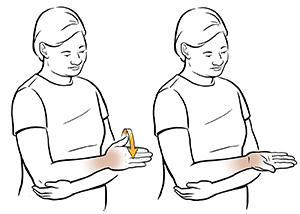
- Start by assuming a proper seated position. Hold one end of the resistance band with your palm down and wrap the other end around your arm to create tension in the band. Rest your forearm on the table or thigh so that the wrist is slightly off the edge and the palm is up. Start with the wrist in a prone position (palms down). Slowly rotate the forearm and wrist outward. Turning the palm up in a supine position against the resistance of the strap. Stay in the supine position for a few seconds, keeping the tension on the band.
- Return to starting position by rotating your forearm and wrist back into pronation. Make sure you perform the exercise in a controlled manner and avoid sudden or jerky movements. As you gain strength, progressively increase the resistance by starting with a light resistance band.
- This exercise targets the muscles involved in wrist supination, helping to strengthen and improve movement control.
Special test For Wrist Supination
There is no specific test that is only designed to assess wrist supination. However, several clinical tests can assess the overall range of motion, strength, and function of the wrist, including supination. These tests help assess the integrity of the wrist joint and the muscles involved in supination Some of the most commonly used tests to assess the wrist that indirectly involve supination include:
- Wrist range of motion test: This involves assessing the active and passive range of motion of the wrist joint, including supination. The examiner observes and measures the extent of supination achieved during movement.
- Assessment of grip strength: Grip strength is closely related to wrist function and can indirectly indicate the strength of the muscles involved in supination. Various devices can be used to measure grip strength, such as a dynamometer.
- Hand muscle test: This test assesses the strength of specific muscles, including the supinators. The examiner uses resistance to ask the patient to supine, and strength is assessed by the patient’s ability to overcome the resistance.
- Functional tests: Functional tests assess the wrist’s ability to perform certain tasks involving supination, such as pouring from a jar, turning a doorknob, or using a screwdriver. These tests assess wrist coordination, strength, and overall function during functional movements.
Summary
In summary, wrist pronation and supination are rotational movements of the forearm that allow for different orientations of the hand and wrist. These movements are vital for performing a wide range of activities and require the coordinated effort of multiple muscles.
FAQs
If you just stand still, the foot rolls inward and the arch flattens – that’s pronation. When you walk or run, the first part of the foot to strike the ground is the outside of the heel, after which the weight is distributed and the foot naturally turns inward to absorb the impact.
There are three typical pronations when running. Some are overpronation, under pronation (or supination), and neutral.
Two important ones are the flexor carpi radialis and the flexor carpi ulnaris. They both arise from the medial epicondyle, where they share a massive tendon of origin, the common flexor tendon, with the other two flexor muscles.
Causes of supination include an inherited problem with the structure of your foot. It can also be caused by weak muscles in the foot, ankle, or lower leg due to tight, stiff shoes or previous damage to the tendons or muscles of the foot.
An abstract. The proper function of the hand is based on its ability to rotate and direct the palm up (i.e. supination) or down (i.e. pronation) while raising the elbow to 90° of flexion. Turning the arm is possible thanks to the rotation of the forearm and the entire upper limb at the shoulder.

